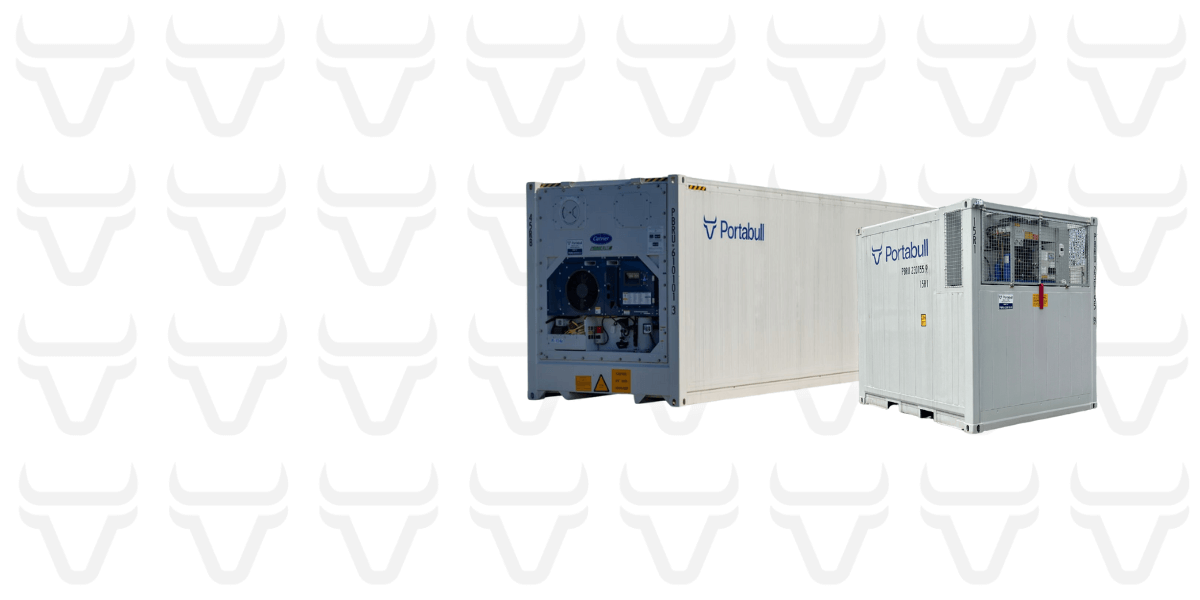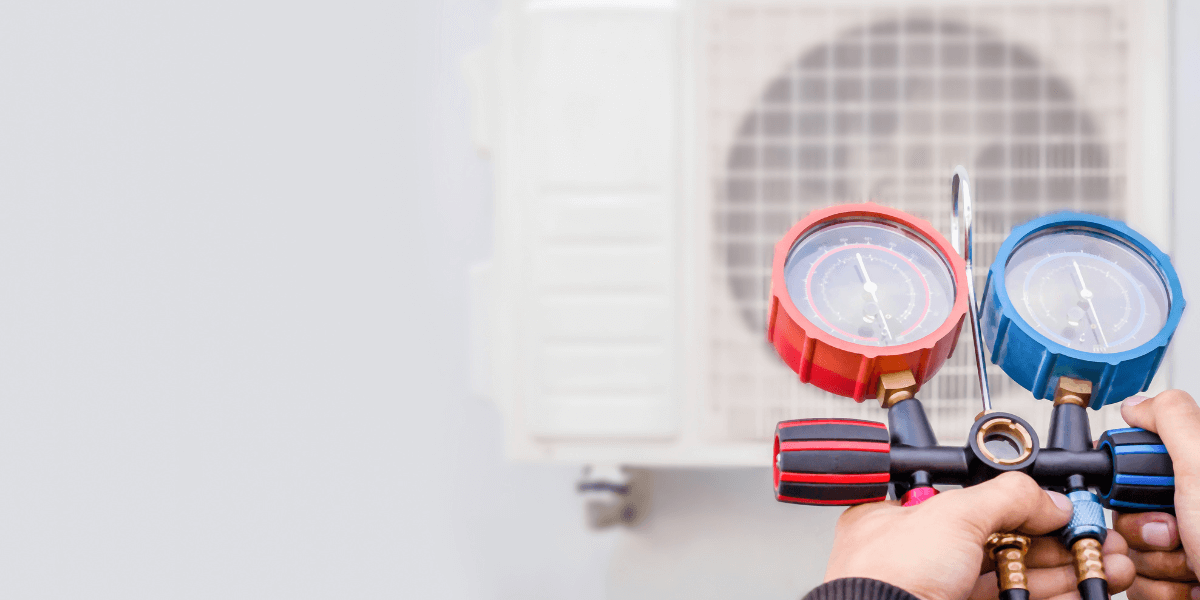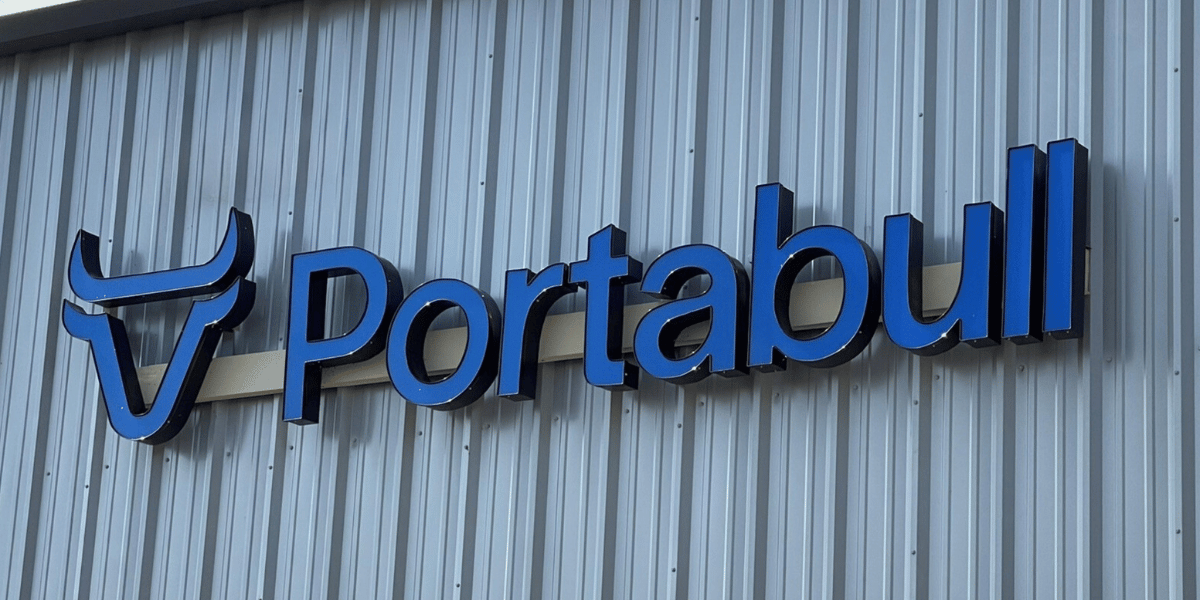How to Defrost Your Cold Storage Rental Unit
Rental cold storage units are great for temporarily expanding climate-controlled storage capacity during periods of high-demand at your business....
4 min read
Portabull Storage Apr 7, 2025 8:30:00 AM
Temporary on-site cold storage units like the electric- and hybrid-powered options from Portabull are high-performance tools. Bringing 1,000 or so cubic feet of space down to -40°F requires seriously capable technology. Sometimes, the normal usage of these units can cause that technology to be less effective over time.
Fortunately, there are ways to stop some of these wear-and-tear issues from ever becoming problems that threaten your business. By knowing what to look for and taking just a few preventative measures, you can help ensure your cold storage solution is working at its best — and protecting your inventory like it ought to.

Two of the most notorious problems with temporary on-site cold storage are impossible to avoid completely: dust and ice. Let’s deal with that second one first, because it might seem odd to think of ice as a problem for a cold storage unit. After all, they’re designed to keep things frozen, right?
In a cold storage container, fans behind the front wall (the wall opposite the doors) work to pull warm air from the top of the enclosed space. They draw this warm air down to an evaporator coil, where it is cooled. Finally, the now-cold air is blown through vents along the floor of the unit, toward the doors. As the cycle repeats itself, the unit gets colder and colder until it reaches its target setpoint.
Ice can become a danger when it hinders the cycle of airflow. Specifically, ice can build up behind the front walls of the unit, beneath the evaporator coil. As more ice forms, cool air is blocked from the vents along the floor. That means less and less cool air is making it into the storage area itself. Eventually, the flow of air can become so blocked that the interior temperature begins to rise even as the cooling process continues to run.
Once ice has built up to the point that it’s blocking cool air from reaching your products, it must be removed. The process for doing that is straightforward but requires planning and time that may prove disruptive to normal operations. All frozen goods must be removed from the unit, then its thermostat needs to be set as high as possible (up to 80°F). It will need to run like that for at least 24 hours to ensure that all ice behind the walls has evaporated.
Of course, removing inventory from a cold storage box so the unit can run at max temperature for 24 hours probably isn’t what you had in mind when you rented the box in the first place. Fortunately, there are steps you can take to minimize ice buildup and keep it from ruining your operational schedule.
Ice forms when warm air cools, condenses, and freezes, and the biggest culprits responsible for letting warm into your unit are the doors. Opening them frequently or for long periods of time greatly increases the chances that ice will form and build up. Solve this problem by consolidating trips into the unit, as well as ensuring the door is sealed every time it’s closed.
Perform a visual inspection once a week. Look at the vents along the floor of the front wall, checking for ice buildup.
For more info, check out these detailed instructions on how to defrost a temporary storage unit.
Remember: by keeping the doors closed (and sealed) as much as possible and maintaining a lookout for any signs of buildup, you could be saving yourself from a thousand headaches. As the old saying goes, “an ounce of prevention is better than a pound of the cure.”
The cooling process that brings a temporary cold storage unit to temperature and holds it there is straightforward, but it relies on some delicate machinery and internal components. If dust is allowed to build up in and around this important equipment, it can impede the unit's performance. More than that, the components themselves can overheat and sustain damage.
Whereas ice forms inside the unit and stops cold air from flowing, dust, dirt, and debris can clog the condenser coil and block hot air from escaping. At first this causes inefficient performance, but, if left unaddressed, it can pose a serious risk to the whole unit.
As with ice, the key to keeping dust from ever being a problem is vigilance and the occasional use of preventative maintenance. Preventive maintenance can protect your units from many costly problems. During your weekly ice inspections, keep an eye out for dust, dirt, and grime.
Pay attention especially to the condenser coil. If you notice the coil is getting dirty, clean it with compressed air or a spray from a garden hose. Never use a pressure washer. Non-corrosive cleaners such as Simple Green can be used to help loosen and remove dirt and debris.
If you use temporary cold storage to preserve important inventory, giving the units a weekly inspection could be the difference between operations-as-normal and a mad scramble to make emergency repairs. In either case, the pros at Portabull are here to help.
Our experts can guide you through every step of installing, using, and maintaining your units. From basic site requirements and operating instructions to storage best practices and preventative maintenance tips, our team has the knowledge you need to ensure your units perform like they ought to. And if a maintenance issue does arise, don’t worry: you’ve got access to 24/7 support provided by real human beings, along with a nationwide cold storage service infrastructure that solves problems quickly. Hear what our customers are saying about our services by clicking here!
When you want a temporary on-site cold storage solution that works hard for you — instead of one that just makes you work hard — reach out to Portabull.
About Portabull
![]()
Portabull Cold Storage isn’t just another cold storage provider—we specialize in smarter, simpler temporary refrigeration solutions designed to save you time, money, and hassle.
Our electric- and hybrid-powered cold storage units offer a clean, efficient, and cost-effective way to protect your valuable inventory without the drawbacks of outdated diesel-powered storage.
With a diverse fleet, scalable solutions, nationwide coverage, 24/7 expert support, and transparent pricing, we make it easy to add temperature-controlled capacity when any industry needs it—and remove it when you don’t.
Subscribe to our newsletter!

Rental cold storage units are great for temporarily expanding climate-controlled storage capacity during periods of high-demand at your business....

Temporary on-site cold storage units like the electric- and hybrid-powered options from Portabull are high-performance tools. Bringing 1,000 or so...

In today’s fast-paced industries, the demand for reliable, portable cold storage is at an all-time high. Businesses across food and beverage,...